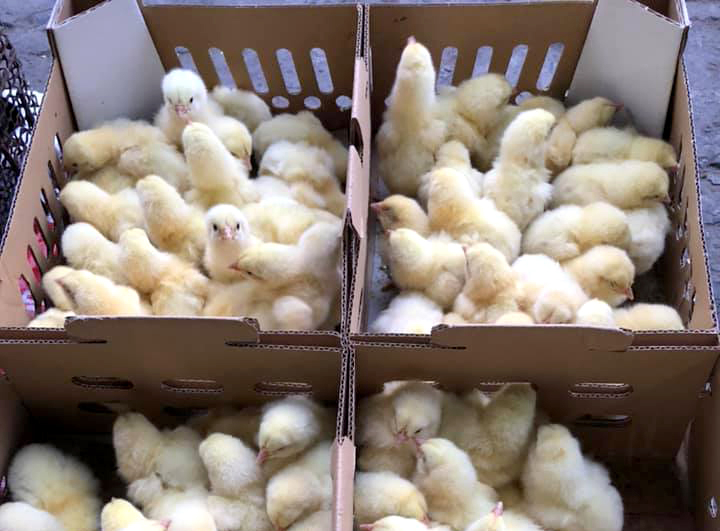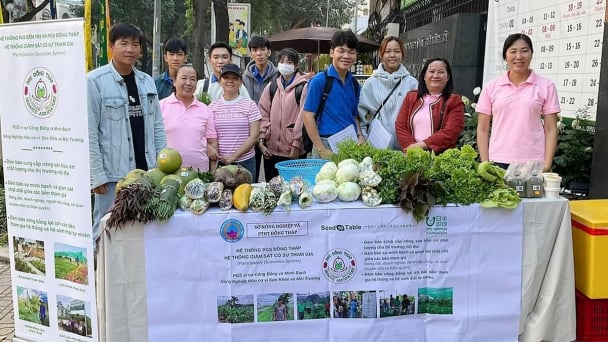May 21, 2025 | 23:11 GMT +7
May 21, 2025 | 23:11 GMT +7
Hotline: 0913.378.918
May 21, 2025 | 23:11 GMT +7
Hotline: 0913.378.918

Breeding chickens owned by Japfa Comfeed Vietnam Company. Photo: Son Trang.
Japfa Comfeed Vietnam (Japfa Vietnam) is currently one of the businesses with the largest flock of poultry in Vietnam.
Mr. Tran Kim Tan, Production Manager of the Southern Poultry Division in Japfa Vietnam, reported that the company's Southern Branch currently has 450,000 broodstock chickens. Japfa Vietnam produces 50 million chickens for meat production (including 25 million colored chickens and 25 million white feathered chickens), and 7 million chickens for egg production.
Japfa Vietnam has actively promoted the establishment of disease-free facilities over the years to form a Feed-Farm-Food chain. According to this strategy, the company primarily focuses on disease prevention. Accordingly, the Japfa Vietnam consistently adheres to the recommendations made by the Ministry of Agriculture and Rural Development, local Departments and Sub-Departments of Animal Health, thereby developing disease prevention procedures for chicken flocks in breeding facilities.
Thanks to the support from the local governments and animal health sector, Japfa Vietnam has actively supported farmers and farms in the registration and establishment disease-free breeding facilities. Furthermore, the company promotes cooperation to ensure that livestock production processes and disease prevention activites are in accordance with regulations on disease safety.
Japfa Vietnam is a subsidiary of Japfa Group, an Indonesia-based company with over 50 years of operation in the poultry industry. Accordingly, Indonesian specialists frequently supported Japfa Vietnam, Vietnamese farming households and linked farms with new techniques and advanced methods to raise disease-free and food-safe poultry in a sustainable manner.
With the goal of building a sustainable Feed-Farm-Food chain, Japfa Vietnam is constantly providing associated farmers with assistance in constructing disease-free facilities on their farms. In addition, the company has accelerated the construction of infrastructure on farms, with an emphasis on the waste treatment system, to ensure safe poultry production and prevent the spread of diseases.
Moreover, Japfa Vietnam focuses on the equipping employees and breeders with knowledge and skills in poultry management and disease prevention.
The company promotes coordination and connection with local governments as well as other livestock companies to exchange information regarding disease prevention in production and in the market. In addition, Japfa Vietnam has developed a linkage between farms and raw material suppliers, thereby creating a stable and sustainable connection in the Feed-Farm-Food chain.

Livestock businesses have invested extensively in constructing disease-free facilities. Photo: Son Trang.
Mr. Nguyen Kim Dung, Head of the Epidemiology Division under the Region 6's Sub-Department of Animal Health, believes that in addition to the local governments, livestock businesses, especially those aiming to export poultry products, are indispensable in the establishment of disease-free zones for poultry.
According to Mr. Tran Kim Tan, livestock businesses must develop special and transparent policies in order to successfully establish disease-free facilities and zones. Additionally, detailed guidelines and regulations on the operation of disease-free systems and facilities must also be provided.
The majority of businesses requires capital support because disease-free breeding facilities require significant investment in infrastructure, equipment, and modern technologies in livestock. Many businesses have voiced their concerns regarding land fund as a major factor in establishing regulated and disease-free breeding zones.
Livestock businesses have proposed the Ministry of Agriculture and Rural Development and local governments to actively share information regarding the market, diseases, etc., so that businesses can adjust timely to increase the efficiency of production as well as disease prevention.
Translated by Nguyen Hai Long
![Reducing emissions from rice fields: [2] Farmers’ commitment to the soil](https://t.ex-cdn.com/nongnghiepmoitruong.vn/608w/files/news/2025/05/05/dsc08881jpg-nongnghiep-140632.jpg)
(VAN) Clean rice cultivation model in Thuong Tan commune, Bac Tan Uyen district, is assisting local residents in achieving sustainable agriculture by substantially reducing costs, increasing productivity, and protecting the environment.

(VAN) At the conference to disseminate Resolution No. 68, AgriS introduced its digital agricultural ecosystem and reaffirmed its commitment to accompanying the Government in promoting private sector development and sustainable agriculture.

(VAN) 'Blue Ocean - Blue Foods' initiative is designed to restore marine ecosystems and establish sustainable livelihoods for local communities by cultivating a minimum of 1,000 hectares of cottonii seaweed in the first three years.
/2025/05/21/4642-3-112707_603.jpg)
(VAN) The V-SCOPE project has made direct contributions to three out of six pillars of the Comprehensive Strategic Partnership between Vietnam and Australia.

(VAN) Facing the threat of rabies spreading to the community, Gia Lai province urgently carries out measures to vaccinate dogs and cats on a large scale.

(VAN) Disease-free livestock farming not only protects livestock herds but also stabilizes production and livelihoods for many farmers in Tuyen Quang.

(VAN) Japan's grant aid project contributes to capacity building, promoting organic agricultural production, and fostering sustainable community development in Dong Thap province.